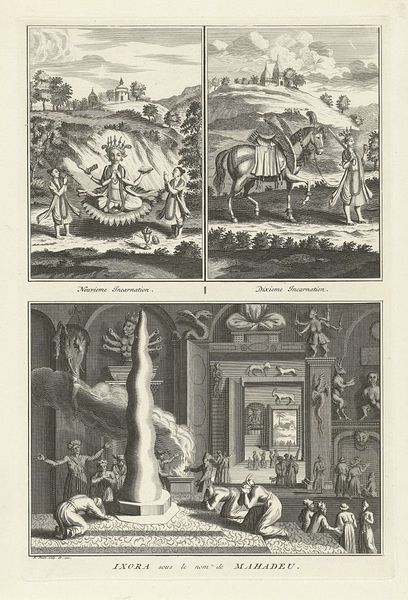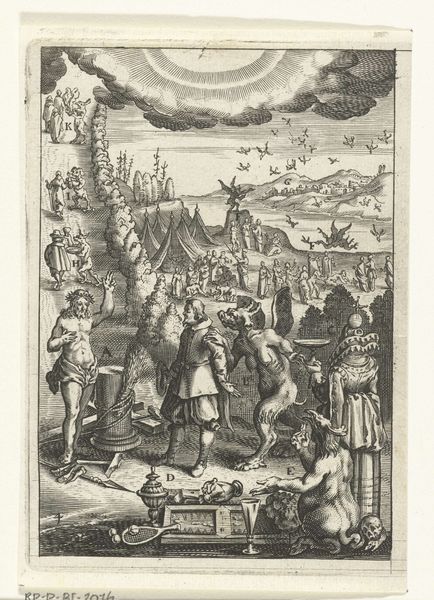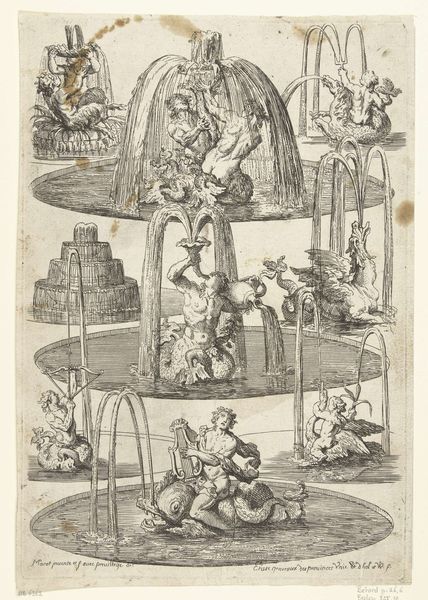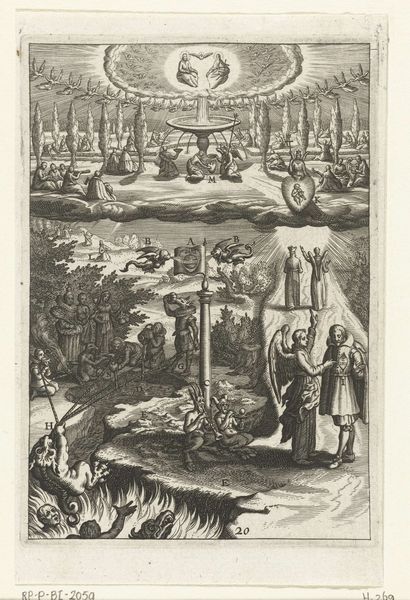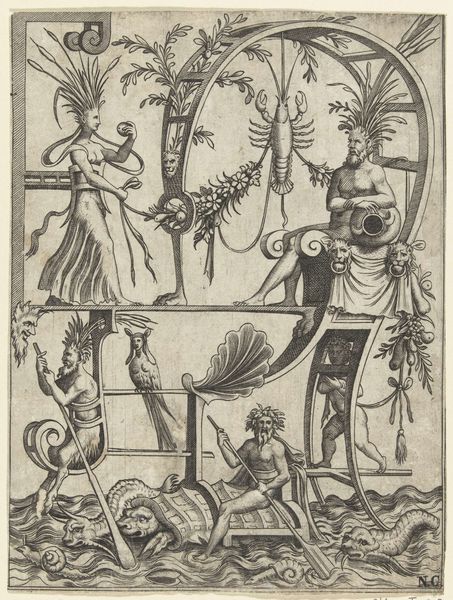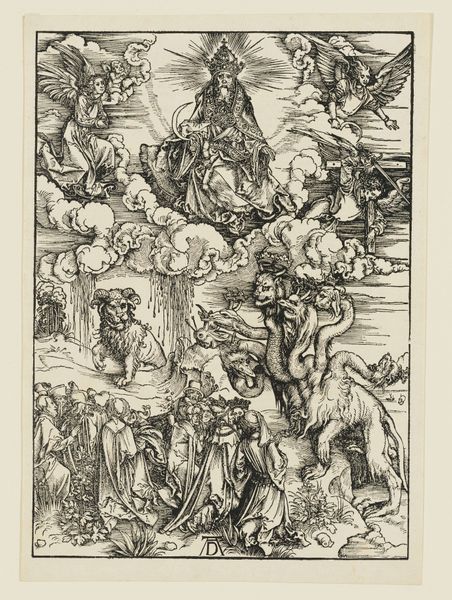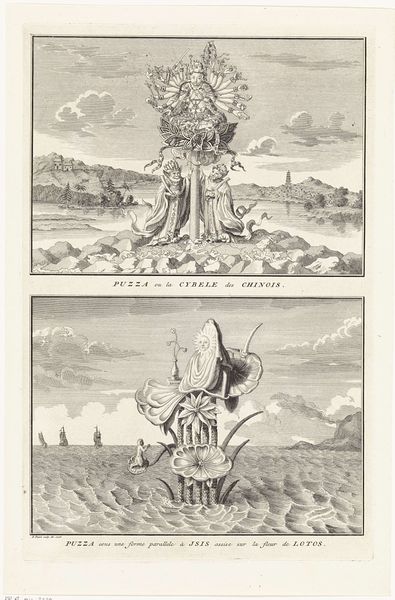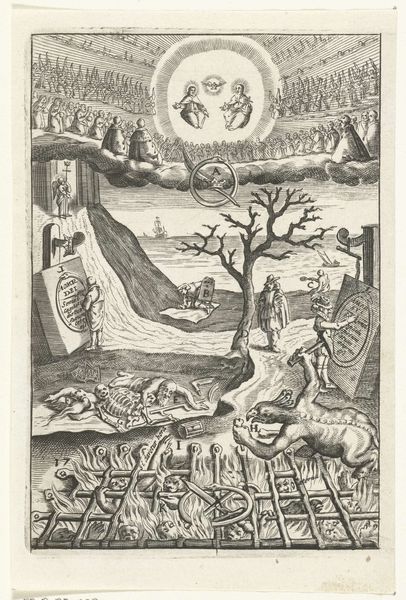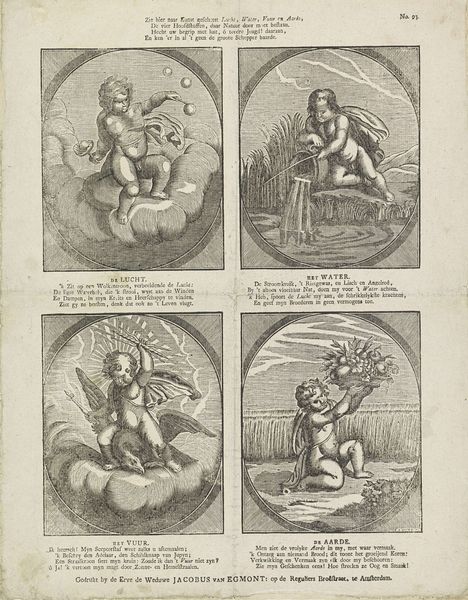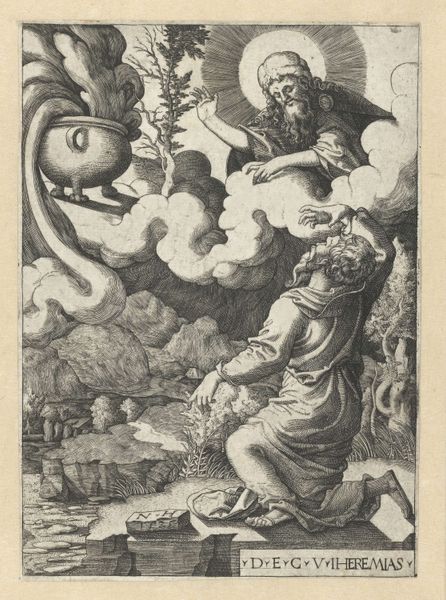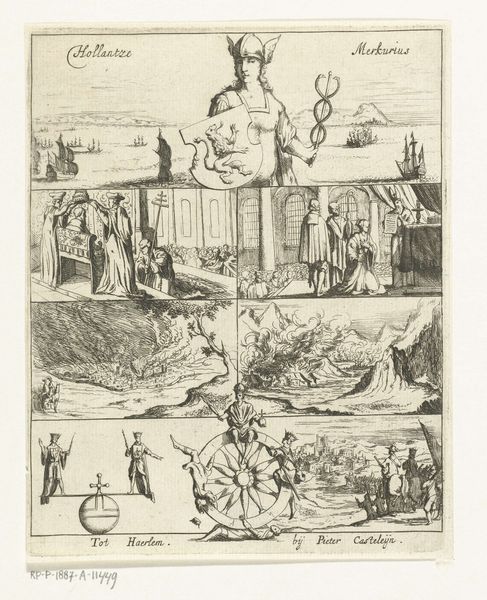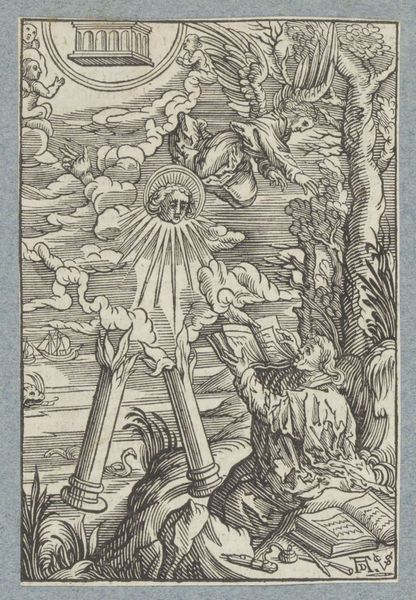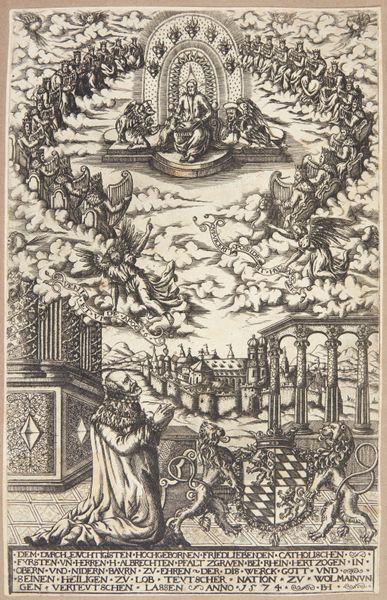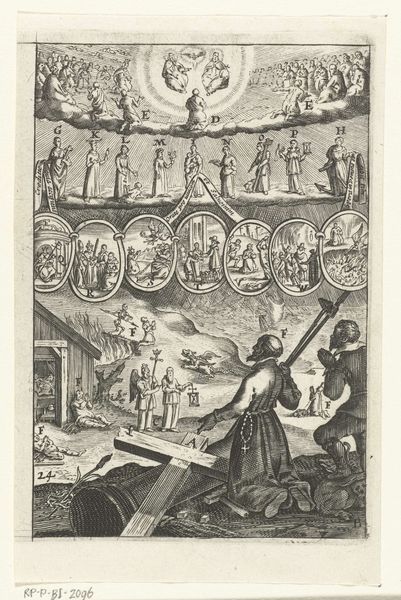
print, engraving, frottage
#
allegory
#
baroque
# print
#
asian-art
#
figuration
#
history-painting
#
engraving
#
frottage
Dimensions: height 330 mm, width 220 mm
Copyright: Rijks Museum: Open Domain
This engraving, made by Bernard Picart in the early 18th century, depicts four incarnations of the Hindu god Vishnu. Each scene brims with symbolic weight, echoing across cultures and histories. Consider the Matsya Avatar, the fish incarnation. Here, Vishnu appears as half-man, half-fish, a savior figure emerging from the depths. This motif of a divine being blended with animal form resonates with ancient Egyptian deities like Sobek, the crocodile god, embodying power and protection. Note, too, how each incarnation is accompanied by devotees. This gesture of supplication, of figures kneeling or bowing before a deity, evokes similar scenes across religious art, from Christian Annunciation paintings to Buddhist depictions of enlightened beings. It speaks to a primal human need to connect with the divine, a need that transcends cultural boundaries. Such images tap into our collective memory, a shared reservoir of symbols and archetypes that resonate deep within our subconscious. These visual motifs, passed down through generations, shape our understanding of the world and our place within it. They echo through time, resurfacing in new forms and contexts, their meanings constantly evolving yet forever tethered to their origins.
Comments
No comments
Be the first to comment and join the conversation on the ultimate creative platform.
